A week's sightseeing in the Trentino-Alto Adige autonomous region and Brescia in Lombardy
We've been over the Simplon Pass, braved the horrific truck traffic on the Milan-Venezia autostrada, made our way up along the river Adige to Trento, and settled into the charming, rustic Locanda del Bel Sorriso. Today's sightseeing agenda includes the western side of the Lago di Garda.
Nomi

First, a stop in Nomi, just north of Rovereto, to seek out the 'final resting place' of an old friend of Kristin's acquaintance.

The sign in the town plaza said something about 'commemoration', etc., and we chose to believe that's got to do with a cemetery.

This is the Piazza Cesare Battisti, by the way. We think we're meant to turn right here.

The long Via Busio out to the memory gardens (we hope)

We've come to the right place.
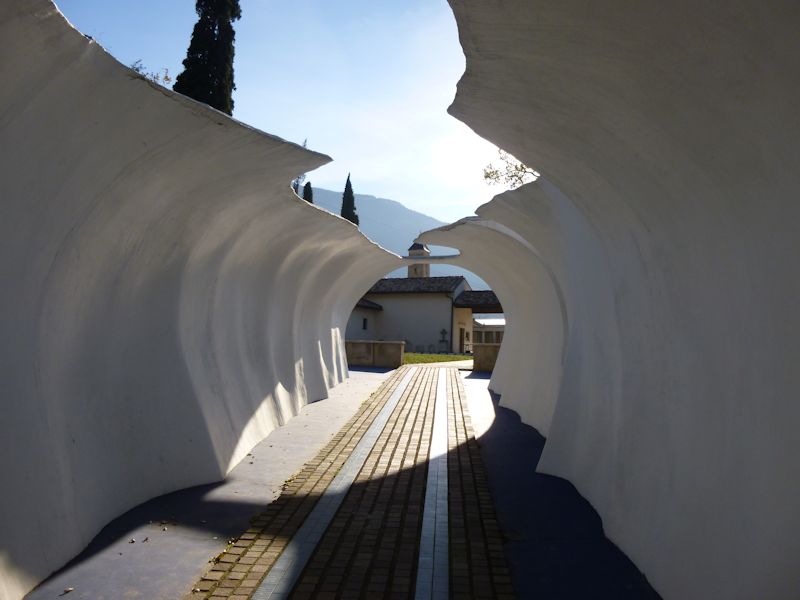
How odd.

We've been informed that Kristin's friend is in the family chapel. It's locked up tight, of course; rightly so.

We're looking around for other signs of the family.

Let's try to peek in the windows.

There she is, Benedetta of worthy memory.

The long walk back into town, punctuated by . . .

. . . the Stations of the Cross along the roadside. (Are we supposed to be doing this on our knees?)
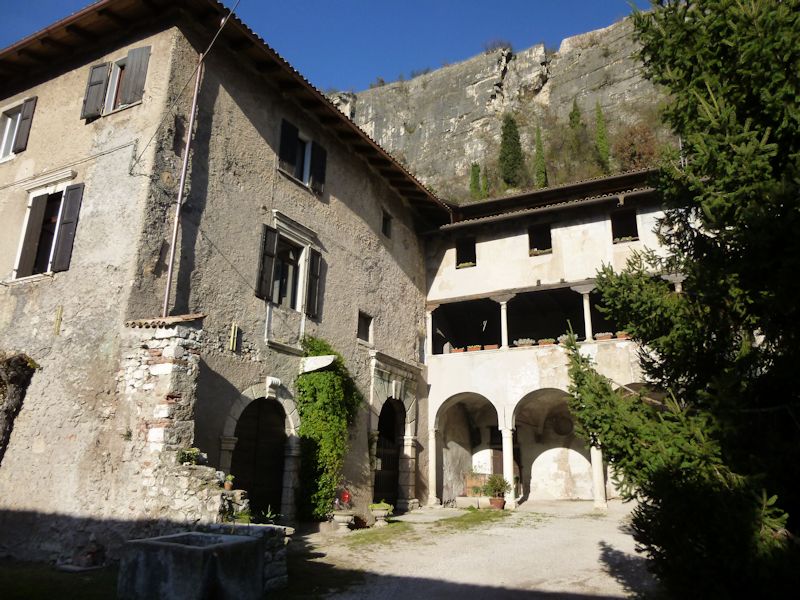
The local palace
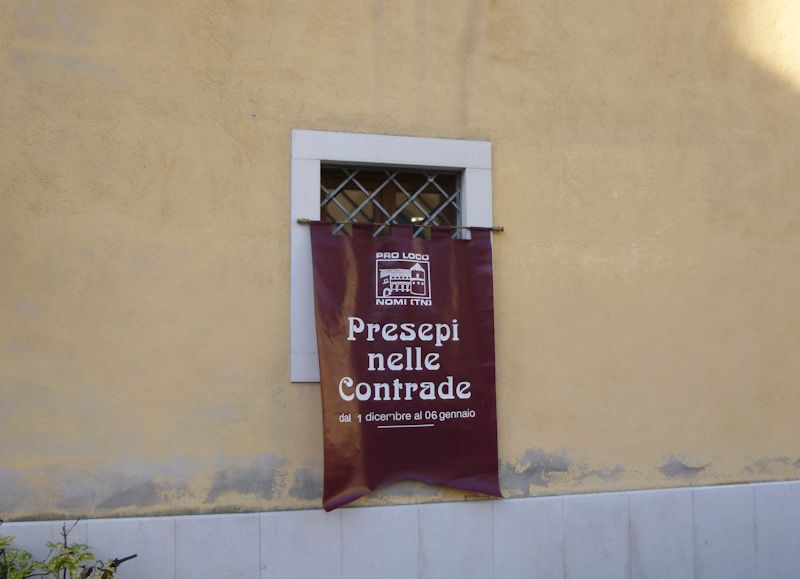
The Christmas display of little nativity crèches in the neighborhood

Kristin looking for crèches

There's one now.
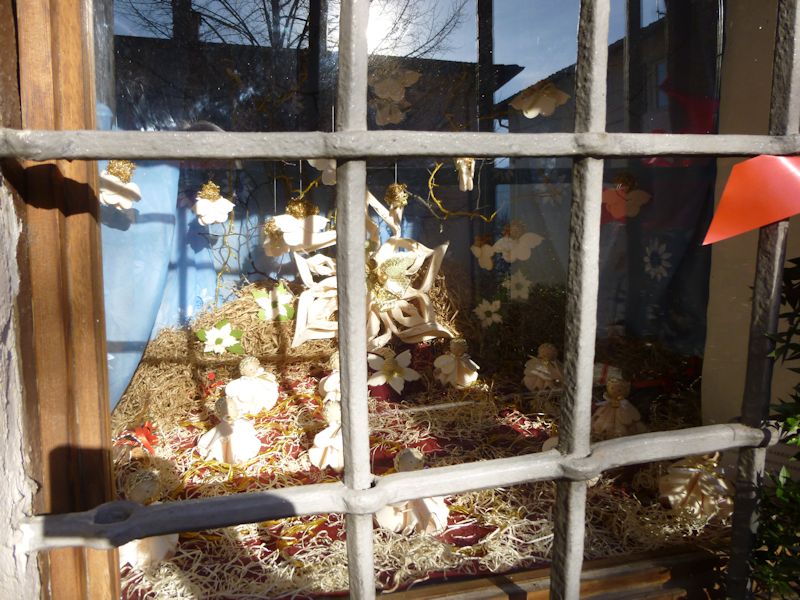
And another

Another

The local church

The palace from the carpark. Now we leave the Adige floodplain and go west over the mountains to Lake Garda.
Riva del Garda

First stop, Riva del Garda, a prosperous tourist spot, by the look of it, in season anyway.
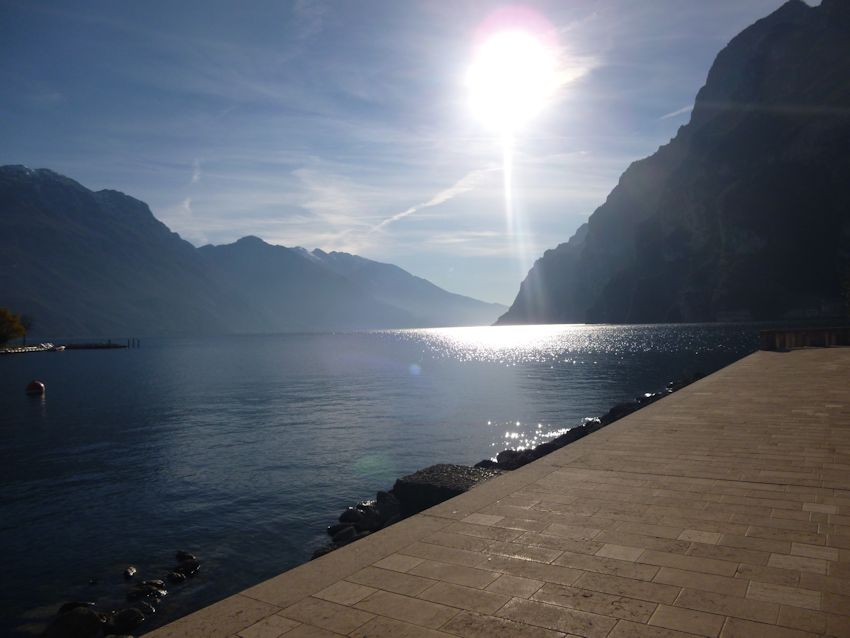
We're looking from Riva 52km southward down Italy's largest lake.

The sailboating crowd out in force on the 4th of December

That's a marina canal . . .

. . . and that's not, or at least not primarily. It's a castle moat.

The main harbor part of town. Riva del Garda has been owned by the lords of Verona, the Venetian Republic, the Prince-Bishops of Trento, Napoleon's Kingdom of Italy, and the Austro-Hungarian Empire, but now, along with the rest of the Trentino region, it's part of Italy, apparently happily so.

The fortress (or rocca) was originally built, evidently in the 12th century, by the Scaliger lords of Verona, chiefly to defend the town against pirates on the lake.

There's a well-respected museum within, the Museo Civico nelle Rocca. . .

. . . but it's closed.

We could content ourselves with a cruise on the Moby Dick instead.

We're crossing the Piazza . . . Cesare Battisti, of course.
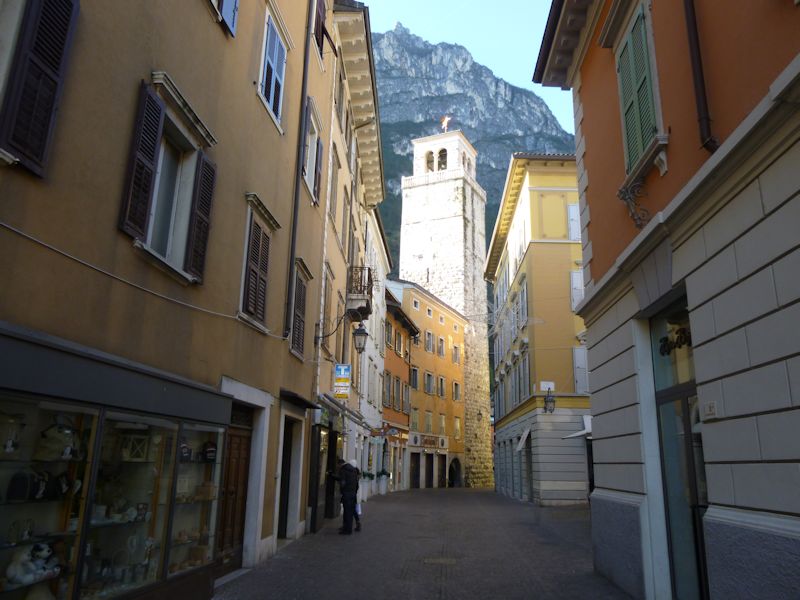
Street scene, the Via Andrea Maffei

The rocca, and Christmas constructions in progress

Shops (and brew pubs) on the waterfront

The Piazza Tre Novembre

The paddle-wheeler Italia

On the waterfront

Looking a lot sprightlier than our belle-epoque Italia on Lake Geneva, in drydock for long-awaited renovations at the moment (photo 2012)
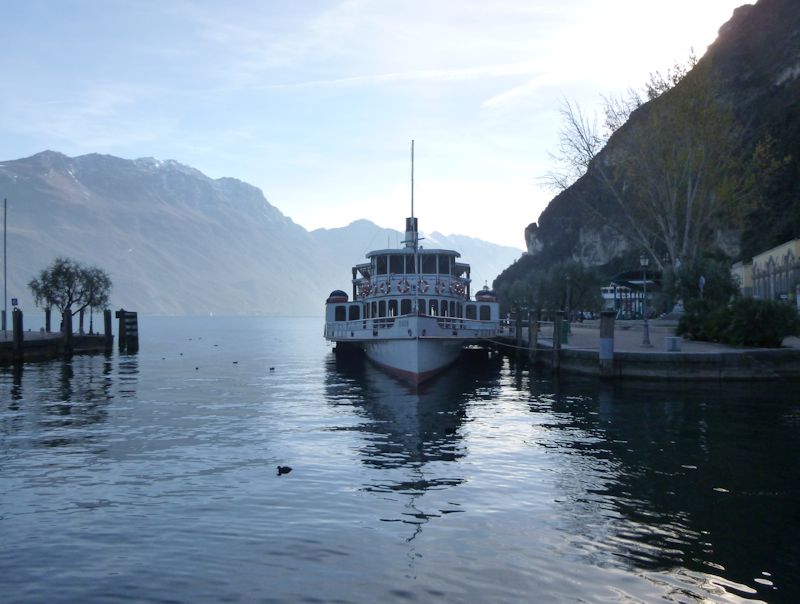
The Italia

The harbor, main piazza, and the Torre Apponale clock tower

The Torre Apponale

The square just behind the waterfront

Street scene

A very quiet winter's day

The Grand Hotel Riva

The fortress again, as we mount up and depart on the road (mostly tunnels and galleries) down the western side of the lake.
Saló
We've left Trento province and passed Limone, Gargano, Gardone, and other lakeside towns, now in the province of Brescia in the region of Lombardy, and here we are in Saló.

This is the back of the 15th century gothic cathedral near the waterfront.

Saló's long, long and elegant waterfront

Like apparently all Italian cities at Christmastime, here's the portable holiday skating rink -- "I [heart] ICE".

Kristin and the Hotel Metropole

This is the hall of heroes, with commemorative plaques to Cavour, Garibaldi, and perhaps Gasparo Bertolotti "da Saló", the 16th century 'inventor' of the modern violin.

Saló grew out of the Roman colony of Pagus Salodium, but only came out from under the shadow of nearby Brescia in the 13th century. In the late 14th century, local girl Beatrice della Scala (or Scaliger) of Verona was married to the vicious Duke Barnabó Visconti, and she talked him into devoting his vast Milanese resources to building up Saló into the strongest town in the region.

Arcades on the lakefront
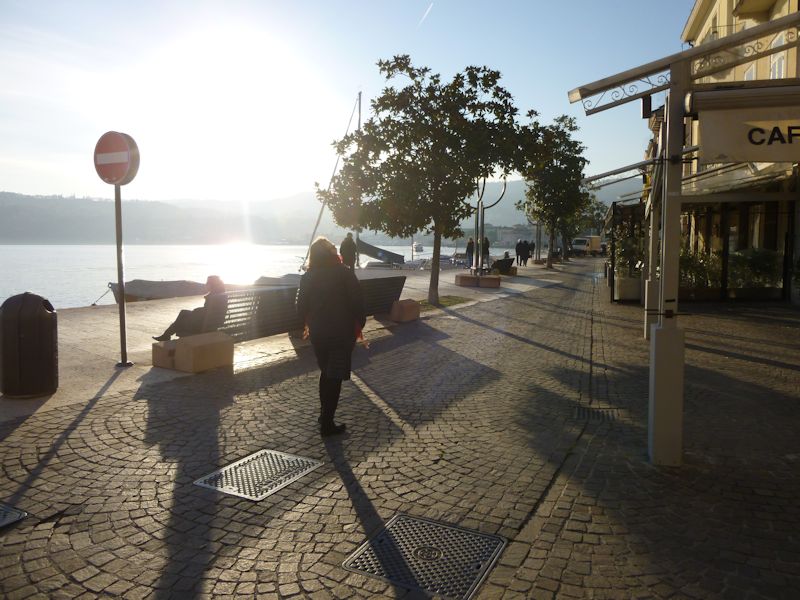
Time for a little yummy thing in the café

Having joined the Venetian Republic in 1426, Saló remained as the capital of the semi-autonomous region along the western Lago di Garda, until in 1796 Napoleon annexed it into his Kingdom of Italy. Reabsorbed into the Austrian Kingdom of Lombardy in 1815, Saló and the surrounding region were finally joined to the unification of Italy in 1866.

That's a statue of Giuseppe Zanardelli, an interesting guy, a distinguished jurist who fought in a number of rebellions against the Austrian overlords (and had to hide out in Switzerland for a while), and worked with Garibaldi during the war of 1859. After unification he served in Italian national politics and was Prime Minister 1901-1903.

That's a statue of some bishop or cardinal (judging from the authoritative hat).

During our visit, we didn't come upon any statues of Benito Mussolini, the distinguished leader of the Italian Social Republic, better known as the Republic of Saló, from 1943 to 1945. When the Italian government capitulated to the Allies in September 1943 and gave Il Duce the boot, the Germans seized northern Italy and set Mussolini up as leader of their puppet state, the capital of which was proclaimed as Rome but was in fact right here in Saló.

The anti-fascist partisans caught up with the pretentious old chap on 27 April 1945 and did with him and his top ministers (and girlfriend) what they thought was best at the time.

The Porta dell'Orologio or clock tower gate to the city
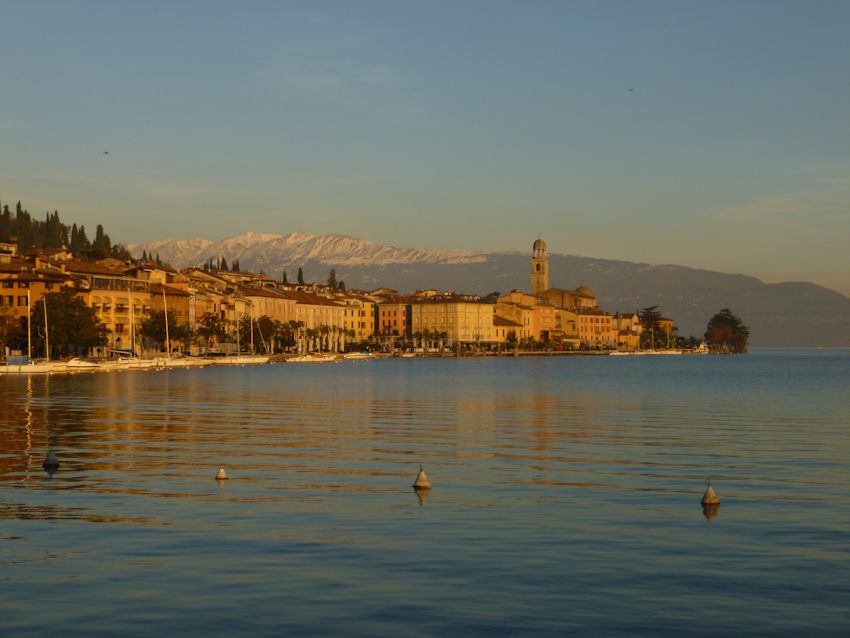
Saló in the late afternoon

Saló and the cathedral tower

I [heart] ICE!

Inside the Duomo di Santa Maria Annunziata

Everything's all glittering and looming.

That's fine. Now we're driving back up to Trento.
 Dwight Peck's personal website
Dwight Peck's personal website 

































































